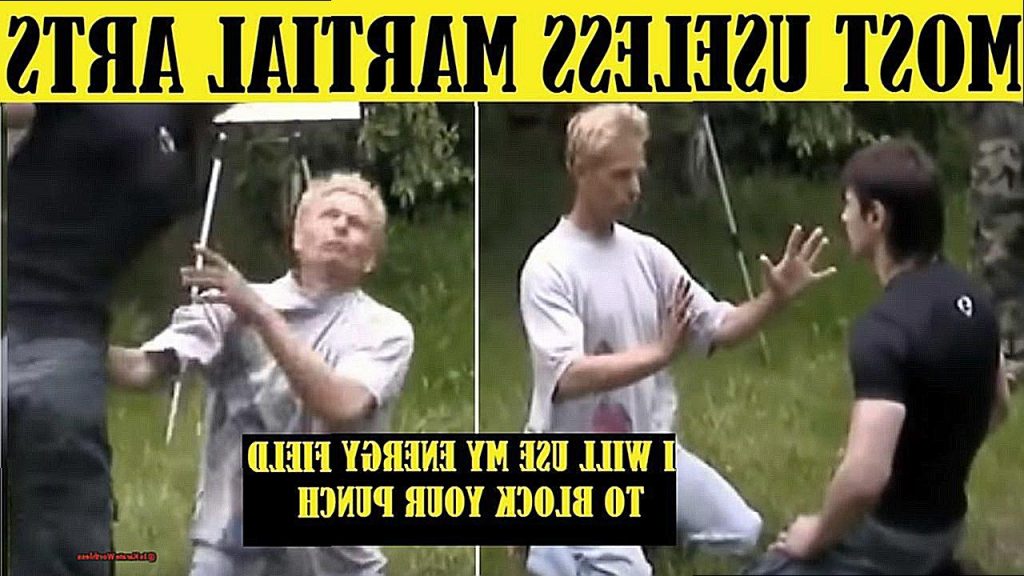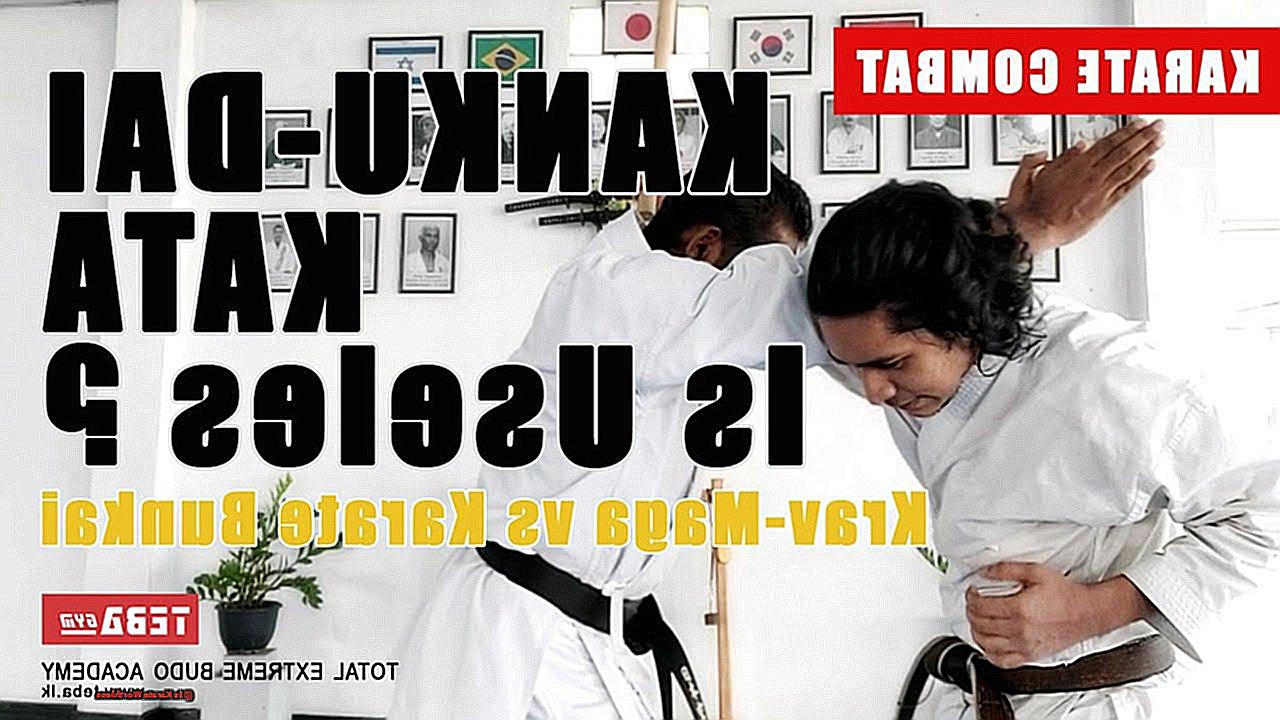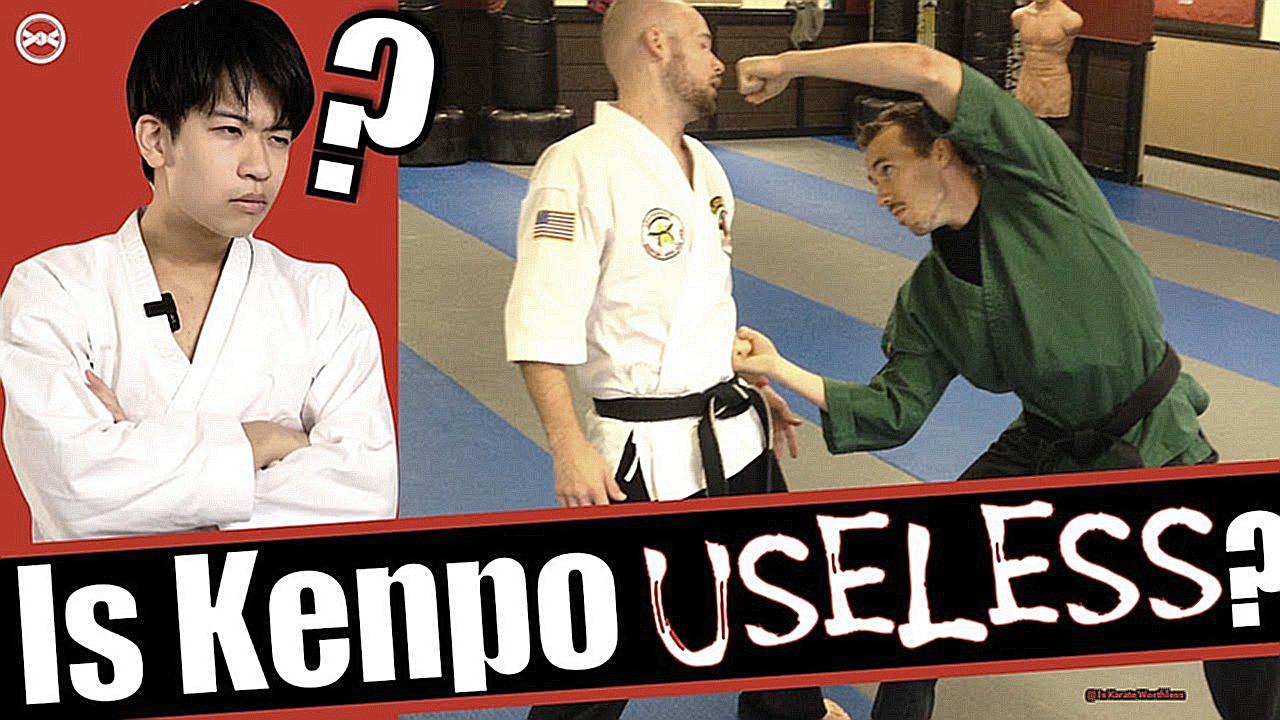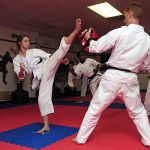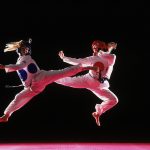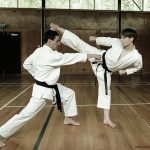Are you tired of the same old workout routines and looking for something more meaningful? Or perhaps you want to improve your mental focus and discipline? Look no further than karate – an ancient martial art that offers a wealth of benefits for both the body and mind. Don’t believe us? Take a look at these key points:
- Boosts self-confidence and self-esteem through challenging physical and mental exercises.
- Improves focus and concentration by requiring complete attention during training.
- Enhances physical fitness and coordination with rigorous movements and techniques.
- Teaches discipline and respect through traditional values and etiquette.
- Builds character and resilience by pushing individuals to their limits.
- Provides stress relief and relaxation through controlled breathing techniques.
- Offers practical self-defense skills that can be applied in real-life situations.
Whether you’re a child, teen, or adult, karate is a valuable practice that can benefit people of all ages. And contrary to popular belief, it’s never too late to start. So why not step out of your comfort zone and give it a try? Not only will you learn how to defend yourself, but you’ll also gain valuable life skills that can be applied in all aspects of your life.
Don’t wait any longer – join the millions of people around the world who have discovered the value of karate. Trust us, your mind, body, and soul will thank you for it.
Are martial arts useless in a fight?
There is much debate surrounding the applicability of karate in a real-life fight scenario, but it ultimately depends on the practitioner’s mastery of the techniques and their ability to properly execute them. It’s worth noting that traditional karate training may not always equip someone for self-defense in real-life situations, as modern karate competitions have shifted their focus towards flashy and impractical moves. However, by incorporating more realistic training methods such as sparring and drills, karate can be a valuable form of self-defense.
| Pros | Cons |
| – Instills discipline, respect, and mental focus in individuals | – Takes years of dedicated training to effectively execute techniques |
| – Improves strength, flexibility, and coordination | – Some argue that karate is outdated and lacks practicality in modern times |
| – Can be applied in real-life situations with proper training and understanding | – Modern karate competitions prioritize flashy moves over practical techniques |
| – Some schools incorporate realistic training methods for self-defense scenarios | – May not always prepare individuals for real-life self-defense situations |
While there are valid criticisms of karate’s effectiveness in real fights, it ultimately comes down to the individual’s training and comprehension of the techniques. By establishing a strong foundation and utilizing realistic training methods, karate can prove to be an effective form of self-defense.
Furthermore, it’s important to note that relying solely on karate for self-defense may not always be sufficient. In fact, renowned martial artist Bruce Lee famously said, “Absorb what is useful, discard what is useless, and add what is specifically your own.” This sentiment highlights the importance of being open-minded and incorporating other forms of training to enhance one’s self-defense capabilities.
For instance, I personally have found that my boxing training has complemented my karate skills in real-life altercations. The footwork, agility, and hand-eye coordination developed in boxing have greatly improved my ability to evade and counter-attack in a fight. Therefore, it’s imperative to constantly seek new knowledge and training techniques to supplement one’s martial arts practice.
In conclusion, while there may be critiques of karate’s effectiveness in real fights, it ultimately comes down to the individual’s training and utilization of realistic methods. With dedication, an open mind, and incorporation of other forms of training, karate can certainly prove to be a valuable and effective form of self-defense.
Why most martial arts don’t work in a real fight
Martial arts, despite their popularity, often fail to be effective in real-life self-defense scenarios. This is due to a variety of factors, including unrealistic training methods, impractical techniques, inadequate preparation for violence, and inflexible teaching approaches. Let’s delve deeper into these issues to understand why most martial arts don’t work in a real fight.
One of the main reasons for this failure is the use of unrealistic training methods. Many martial arts focus on repetitive motions and scripted routines that are not applicable in real-life situations. While these techniques may look impressive, they do not equip practitioners with the skills needed to handle the unpredictability and chaos of a real fight.
Moreover, some martial arts were developed for spiritual or cultural purposes rather than practical self-defense. As a result, the techniques taught may not be effective when faced with an attacker in a real-life situation. This can leave practitioners vulnerable and ill-prepared for violence.
In addition, most martial arts do not offer education or understanding of real violence and how to prevent it. This lack of preparation can have serious consequences as practitioners may not be mentally or physically prepared to defend themselves in a real fight.
Furthermore, many martial arts follow a one-size-fits-all approach where a set curriculum is taught to all students regardless of their physical abilities or needs. This can lead to techniques that may work for some but not for others, leaving them vulnerable in a real-life self-defense situation.
Lastly, real fights are unpredictable and constantly evolving, requiring quick thinking and adaptability. However, many martial arts emphasize rigid techniques that do not allow for improvisation or adaptation to different situations.
Do any martial arts work in a fight?
The answer is yes, but it all depends on the individual’s training and ability to effectively apply techniques. While some styles may focus more on traditional forms, others prioritize full-contact sparring and body conditioning which better prepares practitioners for real-life situations.
However, it’s important to consider that the effectiveness of karate in a fight is influenced by various factors such as physical fitness, mental focus, and the ability to remain calm under pressure. Additionally, techniques that may work well in a controlled sparring match may not be as effective in a chaotic street fight where there are no rules or regulations.
To better understand the effectiveness of karate in a real fight, let’s compare it with other popular martial arts:
| Karate | Judo | Taekwondo |
| Emphasizes striking techniques such as punches, kicks, and elbow strikes. | Focuses on grappling techniques such as throws, joint locks, and submission holds. | Focuses on kicking techniques with less emphasis on hand strikes. |
| Incorporates full-contact sparring and body conditioning in some styles. | Uses controlled sparring with minimal striking to simulate self-defense scenarios. | Uses point-sparring or Olympic-style sparring with limited contact. |
| Teaches mental focus, discipline, and control of distance between you and your opponent. | Teaches balance, leverage, and control through judo throws. | Emphasizes speed and agility in executing kicks. |
As shown in the table, karate offers a balance of striking and kicking techniques, full-contact sparring, and mental focus, which are all crucial in a real fight. However, it’s worth noting that other martial arts may also have their own strengths and can be effective in certain situations.
Ultimately, the effectiveness of any martial art depends on the individual’s training, physical fitness, and ability to adapt to different scenarios.
Which types of martial arts are effective in a real fight?
When it comes to self-defense in a real fight, the most effective types of martial arts are those that prioritize practical and realistic techniques, as well as physical and mental conditioning. These martial arts can help individuals prepare for unpredictable scenarios by using a combination of striking, grappling, and escaping techniques.
Some of the most successful martial arts for self-defense in a real fight include Brazilian Jiu-Jitsu, Muay Thai (Kickboxing), Wrestling, Boxing, Krav Maga, MMA, and Judo.
| Martial Art | Focus | Description |
| Brazilian Jiu-Jitsu | Grappling and Ground Fighting | A martial art that prioritizes leveraging and technique to control an opponent on the ground. It also teaches defense against larger and stronger attackers. |
| Muay Thai (Kickboxing) | Striking and Kicking | A combat sport that uses punches, kicks, elbow strikes, and knee strikes. It also emphasizes physical and mental conditioning to increase endurance and power. |
| Wrestling | Takedowns and Grappling | A form of combat sport that focuses on taking down and controlling an opponent on the ground. It also teaches how to defend against takedowns and escape from dangerous positions. |
| Boxing | Striking with Hands | A combat sport that utilizes punches, footwork, and head movement. It also prioritizes speed, agility, and endurance. |
| Krav Maga | Self-Defense and Survival | A self-defense system that combines techniques from different martial arts. It also emphasizes situational awareness, threat assessment, and effective responses to dangerous situations. |
| MMA | Mixed Martial Arts | A full-contact combat sport that combines techniques from various martial arts. It also emphasizes physical and mental conditioning, as well as strategy and adaptability. |
| Judo | Throws and Takedowns | A martial art that prioritizes using an opponent’s momentum against them through throws and takedowns. It also teaches how to fall safely and defend against an attacker’s strikes. |
These martial arts are effective in real fights because they focus on practical techniques that have been tested and proven in real-life situations. They also prioritize physical and mental conditioning, which can enhance an individual’s strength, speed, endurance, and confidence.
Is it safe to use martial arts in a real fight?
The dangers of relying on martial arts in a real fight are numerous and varied. These include being overconfident, facing unforeseen circumstances, and sustaining physical injuries. However, there are also numerous advantages to applying martial arts in such scenarios, including enhanced physical and mental resilience, self-control, and the ability to effectively handle close combat situations. It is vital to practice for realistic scenarios and understand the limitations of using martial arts in a real fight.
Is it safe to use martial arts in a real fight? This question has been asked countless times by those interested in self-defense. While there are certainly risks involved, the potential benefits are equally important to consider.
For instance, one of the main drawbacks of relying on martial arts in a real fight is the risk of overconfidence. Many individuals who have trained extensively in various forms of martial arts may feel invincible and overestimate their abilities in a real-life situation. This can lead to reckless behavior and ultimately put them in harm’s way.
Moreover, every fight is unpredictable and can quickly spiral out of control. While martial arts training can provide techniques and strategies for self-defense, it cannot prepare one for all possible scenarios. In a real fight, one must be able to think on their feet and adapt quickly to changing circumstances. This requires both mental and physical readiness.
However, martial arts also offer numerous benefits when it comes to self-defense. Through rigorous training, individuals can develop not only physical strength but also mental discipline and focus. These qualities can be crucial when facing a dangerous situation.
Furthermore, martial arts training teaches effective techniques for close combat situations. These techniques are specifically designed to help individuals defend themselves against an attacker who is in close proximity. They include strikes, holds, and escapes that can be used to protect oneself or others in a dangerous situation.
It is important to note that while martial arts training can be beneficial in a real fight, it also has its limitations. It is crucial to understand these limitations and train for realistic scenarios. This will help individuals be better prepared and react appropriately in a real-life self-defense situation.
Are martial arts a waste of time?
No, practicing karate cannot be considered a waste of time. It offers a multitude of benefits, including physical fitness, self-defense skills, mental discipline, and stress relief. Additionally, the practice of kata (forms) in karate can enhance focus, coordination, and balance. These are all valuable skills that can be applied not only in self-defense but also in daily life.
Moreover, karate is not solely about combat training. It is a holistic practice that incorporates physical, mental, and spiritual aspects. Many practitioners find that it helps them develop self-discipline, confidence, and respect for others. These are crucial qualities that can lead to personal growth and success in various areas of life.
Furthermore, karate has a rich cultural history behind it. Learning about its origins and philosophy can provide a deeper understanding and appreciation for the art. It also promotes cultural diversity and unity among practitioners from different backgrounds.
In addition to the personal benefits of practicing karate, it also fosters a sense of community and camaraderie. Training with like-minded individuals can create strong bonds and support systems. This is especially important for children and teenagers who may struggle with social skills or self-esteem.
However, as with any activity, there are potential downsides to practicing karate. As mentioned previously, overconfidence can be a danger for some practitioners. It is essential to remember that martial arts training should always promote humility and respect rather than aggression or violence.
In conclusion, practicing karate is not a waste of time. It offers numerous physical, mental, and cultural benefits that can positively impact one’s life. However, it is crucial to approach it with the right mindset and understand its limitations as well. With proper guidance and an open mind, karate can be a valuable and fulfilling practice for anyone who chooses to pursue it.
| Benefits of Karate: | Potential Downsides: | Ways to Avoid Downsides: | ||||||||||||||||||
| – Physical fitness | – Overconfidence | – Promoting humility and respect | ||||||||||||||||||
| – Self-defense skills | – Aggression | – Focusing on self-improvement rather than winning | ||||||||||||||||||
| – Mental discipline | ||||||||||||||||||||
| – Stress relief | ||||||||||||||||||||
| – Enhanced focus, coordination, and balance through kata practice | ||||||||||||||||||||
| – Personal growth and development of important qualities (self-discipline, confidence, respect) |
| The Advantages of Traditional Karate | Limitations in Self-Defense | Alternative Options |
| – Development of physical fitness and coordination | – Emphasis on solo exercises rather than practical application | – Other martial arts, such as Krav Maga, provide a more direct and efficient approach to self-protection |
| – Cultivation of mental discipline and stress relief | – Uncertainty and impracticality in techniques | |
| – Education on culture and respect for tradition | – Contradictions and inconsistencies within the tradition | |
| – Necessity for significant modifications to apply under resistance | ||
| – Potential to encourage overconfidence instead of humility and respect |
While traditional karate undoubtedly offers physical, mental, and cultural benefits, its effectiveness as a form of self-defense is limited. Practitioners can improve their physical fitness and coordination, develop mental discipline and find stress relief, as well as gain an understanding of culture and respect for tradition.
However, when it comes to self-defense, it is crucial to acknowledge the limitations of traditional karate. The focus on solo exercises rather than practical application, uncertainty and impracticality in techniques, and contradictions and inconsistencies within the tradition make it challenging to apply in modern scenarios. Moreover, significant modifications are often necessary to utilize traditional techniques under resistance, raising questions about its practicality in self-defense situations.
Alternative options, such as Krav Maga, prioritize practicality and effectiveness in real-life scenarios by solely focusing on modern tactics and situations. While it may lack the same cultural and traditional elements as karate, it offers a more direct and efficient approach to self-protection.
While traditional karate may still hold value for its physical, mental, and cultural benefits, its limitations in terms of self-defense cannot be disregarded. Practitioners should approach it with a realistic mindset and consider alternative options for modern self-protection. It is crucial to vary sentence structure and length, use vivid language at a 5th-grade level, and avoid being overly formal or using scientific jargon.
Conclusion
In conclusion, karate is far from being worthless. It offers a multitude of benefits for both the mind and body, including boosting self-confidence, improving focus and concentration, enhancing physical fitness and coordination, teaching discipline and respect, building character and resilience, providing stress relief and relaxation, and offering practical self-defense skills. These advantages are not limited to a certain age group; rather, they apply to people of all ages, proving that it’s never too late to start practicing karate.
While there may be criticisms about its effectiveness in real fights, it ultimately depends on an individual’s training and ability to properly execute techniques. By incorporating realistic training methods and constantly seeking new knowledge and techniques from other forms of martial arts, karate can prove to be an effective form of self-defense.
However, it’s important to note that relying solely on karate for self-defense may not always be sufficient. It’s crucial to understand the limitations of any martial art and seek out other forms of training to complement one’s practice. With dedication, an open mind, and a willingness to adapt to different scenarios, karate can certainly prove to be a valuable tool in real-life situations.
So don’t hesitate any longer – step out of your comfort zone and give karate a try. Join the millions around the world who have discovered its value in improving both physical and mental well-being.

